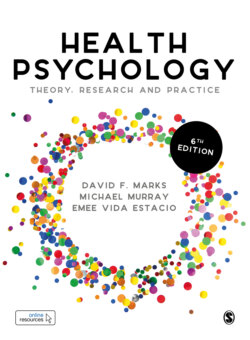Читать книгу Health Psychology - Michael Murray - Страница 56
На сайте Литреса книга снята с продажи.
Facts of Life and Death
ОглавлениеWhere a baby is born and the mother’s access to water, food and education determine whether the baby lives or dies. A baby in Sierra Leone has a 72% chance, while a Japanese baby has a 96% chance of reaching the age of 5. Health inequalities have always existed; in this chapter, we examine why.
Each individual human is a creation of genetics, environmental experience and the interaction between the two (see Chapter 3). The environment can be broken down into macro and micro levels. The macro-social environment affects health and well-being in a huge variety of ways. The term macro-social refers to large-scale social, economic, political and cultural forces that influence the life course of masses of people simultaneously. Macro-social influences include actions and policies of governmental organizations, non-governmental organizations (NGOs), cultures, historical legacies, organized religions, multinational corporations and banks, and unpredictable, large-scale environmental events, all of which have the potential to influence huge sectors of the entire human race.
First, devastating ‘acts of God’ can have severe consequences for individuals and communities. The short- and long-term health impacts of these events are moderated by international readiness to respond, and Interdisciplinary Emergency Response Teams can ameliorate the impact of natural disaster and extreme weather events. Microblogging on Twitter and other social media is helpful in expediting rapid disaster response (Tapia et al., 2013).
Second, a variety of pandemics that spread across continents include typhoid, cholera, avian flu (Shinya et al., 2006), influenza (Karademas et al., 2013; Mo and Lau, 2014; Flowers et al., 2016), COVID-19 (Matias, Dominski, & Marks, 2020) and HIV infection (Pellowski et al., 2013; Rohleder, 2016).
Third, the scourges of war, genocide, sectarian violence and terrorism take a significant toll, with multiple deaths, injuries and trauma (De Jong and Kleber, 2007; Medeiros, 2007; Ciccone et al., 2008; Maguen et al., 2010; Zerach et al., 2013).
Fourth, the legacies of colonial genocide take centuries to heal. Indigenous ‘First Nation’ communities have consistently disproportionate rates of psychiatric distress that are associated with historical experiences of European colonization (Gone, 2013). Aboriginal children experience a greater burden of ill health compared with other children, and these health inequities have persisted for hundreds of years (Greenwood and de Leeuw, 2012).
Fifth, human recklessness with fossil fuels is causing global warming, climate change, rising sea temperatures, acid rain, coral bleaching, global dimming, ozone depletion, biodiversity loss and rising water levels, all transforming life on this planet as we know it (Pearce, 2009).
Sixth, the use of fossil fuels is peaking and, as oil and gas reserves run out, have become more costly; the world economy could go into decline, with significantly decreased agriculture and food production (Murphy and Hall, 2011; Pfeiffer, 2013).
Seventh, increasing poverty makes life a struggle for survival for a billion people. In spite of progress, almost 870 million people were chronically undernourished in 2010–12, the majority living in developing countries, where 850 million people, or 15% of the population, were estimated to be undernourished (Food and Agriculture Orgwanization, 2012).
Eighth, lack of clean drinking water is a major cause of suffering, disease and early deaths: 3.4 million people die each year from a water-related disease, with 780 million people lacking access to clean drinking water; 2.5 billion people have no access to a toilet (water.org, 2014: http://bit.ly/1aa4eri).
The message of this chapter is summarized thus: what individuals can do to change their lives is not simply a matter of personal choice – such changes are constrained politically, economically and culturally. In the globalized economy, everything is interconnected. Macro-social economic, political and cultural factors create the context for everything else, including health, illness and health care.
